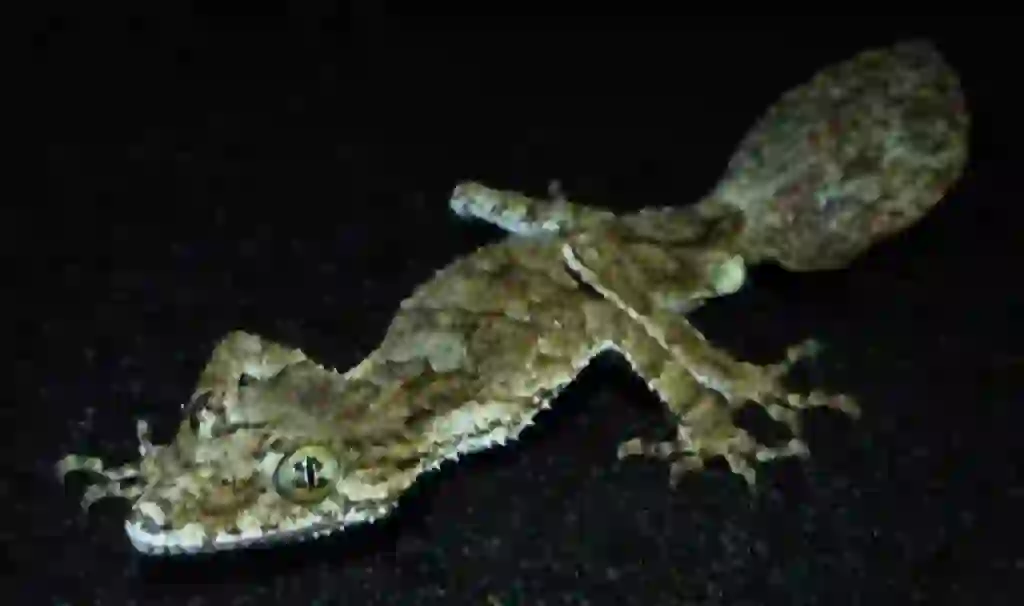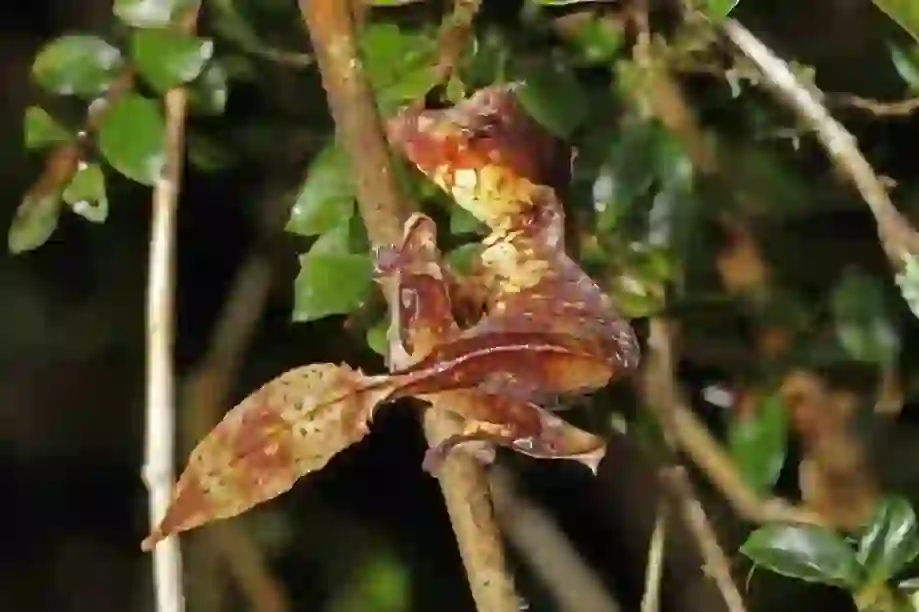
Lizard
Lizard
Lizard
Do you know how many kinds of lizards exist? Actually, there are said to be more than 4000 species of lizards. You will be surprised by the large number of them! And the charm of lizards is their “individuality”. Their size, face, body shape, features, and skin texture vary greatly depending on the type of lizard. Perhaps because of their rich individuality, lizards are popular as pets. Let’s explore more about lizards!
Lizard Basic Infomation
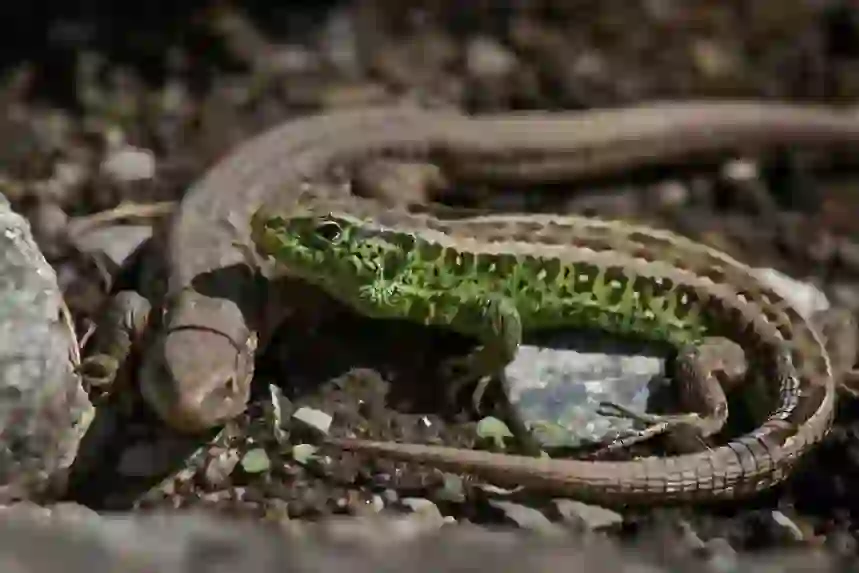
Reptilia-Squamata-Lacertilia. Largest species Komodo dragon Length : about 250-300㎝ Weight : about 70-100kg. Smallest species Nano-chameleon Length:2.5㎝ Weight : not clear Lizards are widely distributed around the world. Specifically, they live in places such as tropical regions, high-altitude regions, forests, and deserts. Many of these environments are warm, which is suitable for regulating their body temperature. There is a reason why lizards regulate their body temperature by themselves. It is because lizards are ectotherms. Ectotherms are animals that have a constitution that is easily affected by the surrounding environment in terms of body temperature. Therefore, they adjust their body temperature by warming up their bodies in the sunlight when it gets cold, and cooling down their bodies in the shade when it gets hot. In Japan, you will see more lizards when the season becomes warm from spring. You may often see lizards with bright blue tails, right? The name of that lizard is called “Japanese five-lined skink”.
Lizards that live in Japan, such as the Japanese five-lined skink, disappear from sight when winter comes. Where do they hide? Actually, when the temperature drops below 15°C in the cold season, they burrow into the soil and start hibernating. And when the warm season comes again, they show up. The breeding season of the Japanese five-lined skink is around April and May. At the same time, the male’s body changes. It is that from the throat to the belly, it becomes a pale red color. This change is called “nuptial color”. It is a characteristic of male lizards in heat, and they become more territorial and fight with each other. And around May and June, the female makes a place for laying eggs. The female digs a hole under fallen trees or rocks and prepares for laying eggs. She lays 5 to 16 eggs at a time. The eggs hatch after 40 to 50 days, so the female protects them until then.
When keeping rare animals, you may need to follow the laws set by the country. This time, we will introduce whether you can keep lizards at home in Japan. Reptiles are becoming more popular, and more people are keeping lizards as pets. The most popular types of lizards are the “Leopard gecko” and the “Bearded Dragon”. Both types are relatively easy to keep, so that is also a point of popularity. You can keep not only lizards that you have adopted from a pet shop, but also wild lizards. Here, we will introduce how to keep a wild “Japanese five-lined skink”.
The main food of lizards is insects. ・Crickets. ・Mealworms. ・Honeyworms. You can feed them with more confidence with insects that are sold at pet shops. Since insects alone are not enough for calcium, it is recommended to sprinkle calcium powder on the food and give it to them. Also, choose the size of the insects according to the size of the lizard you are keeping. If the food is larger than the lizard’s mouth, it may not be eaten or choked. To avoid that, let’s give them food with the size in mind. You don’t have to feed them every day. As a guide, let’s do it about 2 to 3 times a week.
・Breeding cage. ・Bedding material. ・Hideout. ・Watering place. ・Heater. ・Ultraviolet light. ・Thermometer and hygrometer.
1)Let’s decide whether to keep them indoors or outdoors. For those who are wondering whether to keep them indoors or outdoors, let’s judge by whether or not to hibernate the lizard. If you keep them indoors, you will need temperature control to prevent them from hibernating. If you keep them outdoors, you will need to manage the amount of food before hibernation. It is also said that adult lizards live longer if they are hibernated. However, it is difficult to hibernate them because there are things that need to be prepared, such as food management. They may die if they fail to hibernate properly. 2)Let’s manage the temperature well. When you keep it indoors, try to keep the temperature at around 25°C. In the cold winter season, use a panel heater or air conditioner to raise the indoor temperature. Be careful not to let the indoor temperature drop below 15°C, as it will hibernate. 3)Let’s make a place where it can get ultraviolet rays. In indoor breeding, lizards cannot sunbathe well, so install an ultraviolet light for them. Be careful not to make the ultraviolet light too strong or too weak, as it can cause heatstroke or ultraviolet deficiency. Do not illuminate the entire breeding cage, but adjust the space so that about half of it can sunbathe. Lizards regulate their own body temperature, so please create an environment where they can choose when to sunbathe and when to rest.
Lizard Q&A

Pets are growing in popularity.
When keeping rare animals, you may need to follow the laws set by the country. This time, we will introduce whether you can keep lizards at home in Japan. Reptiles are becoming more popular, and more people are keeping lizards as pets. The most popular types of lizards are the “Leopard gecko” and the “Bearded Dragon”. Both types are relatively easy to keep, so that is also a point of popularity. You can keep not only lizards that you have adopted from a pet shop, but also wild lizards. Here, we will introduce how to keep a wild “Japanese five-lined skink”.
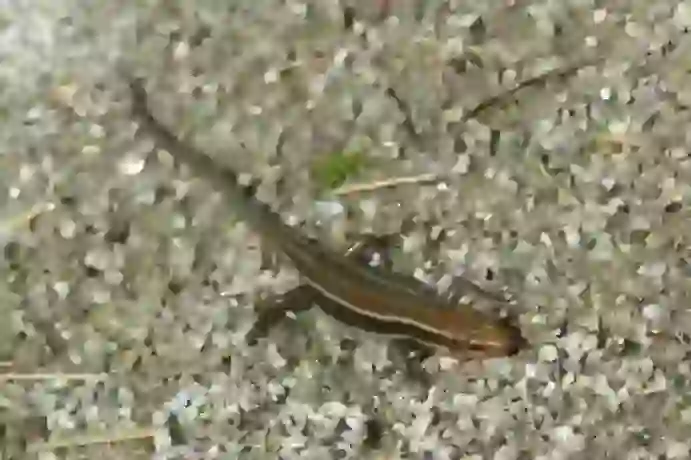
What should I feed them?
The main food of lizards is insects. ・Crickets. ・Mealworms. ・Honeyworms. You can feed them with more confidence with insects that are sold at pet shops. Since insects alone are not enough for calcium, it is recommended to sprinkle calcium powder on the food and give it to them. Also, choose the size of the insects according to the size of the lizard you are keeping. If the food is larger than the lizard’s mouth, it may not be eaten or choked. To avoid that, let’s give them food with the size in mind. You don’t have to feed them every day. As a guide, let’s do it about 2 to 3 times a week.
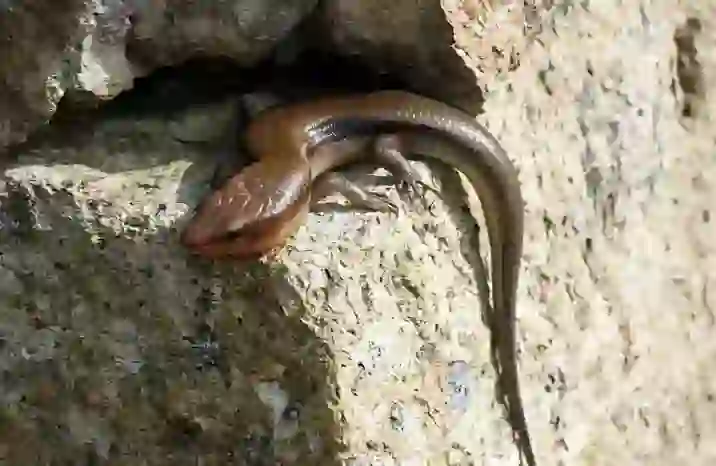
About the breeding environment.
・Breeding cage. ・Bedding material. ・Hideout. ・Watering place. ・Heater. ・Ultraviolet light. ・Thermometer and hygrometer.
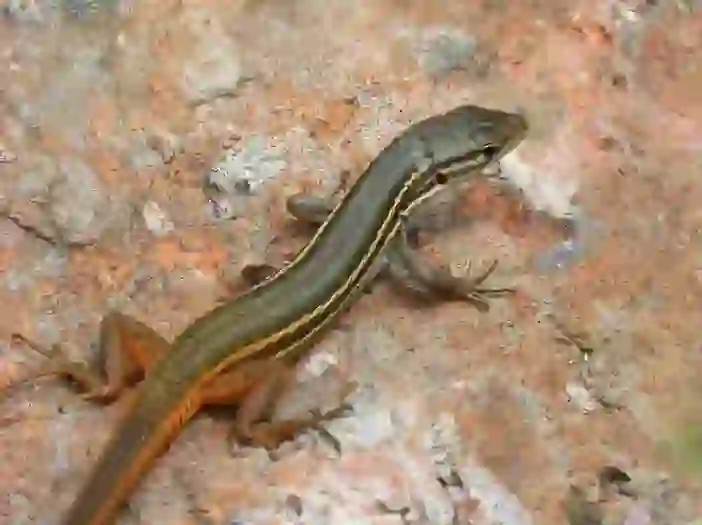
There are three points to keep in mind when breeding.
1)Let’s decide whether to keep them indoors or outdoors. For those who are wondering whether to keep them indoors or outdoors, let’s judge by whether or not to hibernate the lizard. If you keep them indoors, you will need temperature control to prevent them from hibernating. If you keep them outdoors, you will need to manage the amount of food before hibernation. It is also said that adult lizards live longer if they are hibernated. However, it is difficult to hibernate them because there are things that need to be prepared, such as food management. They may die if they fail to hibernate properly. 2)Let’s manage the temperature well. When you keep it indoors, try to keep the temperature at around 25°C. In the cold winter season, use a panel heater or air conditioner to raise the indoor temperature. Be careful not to let the indoor temperature drop below 15°C, as it will hibernate. 3)Let’s make a place where it can get ultraviolet rays. In indoor breeding, lizards cannot sunbathe well, so install an ultraviolet light for them. Be careful not to make the ultraviolet light too strong or too weak, as it can cause heatstroke or ultraviolet deficiency. Do not illuminate the entire breeding cage, but adjust the space so that about half of it can sunbathe. Lizards regulate their own body temperature, so please create an environment where they can choose when to sunbathe and when to rest.
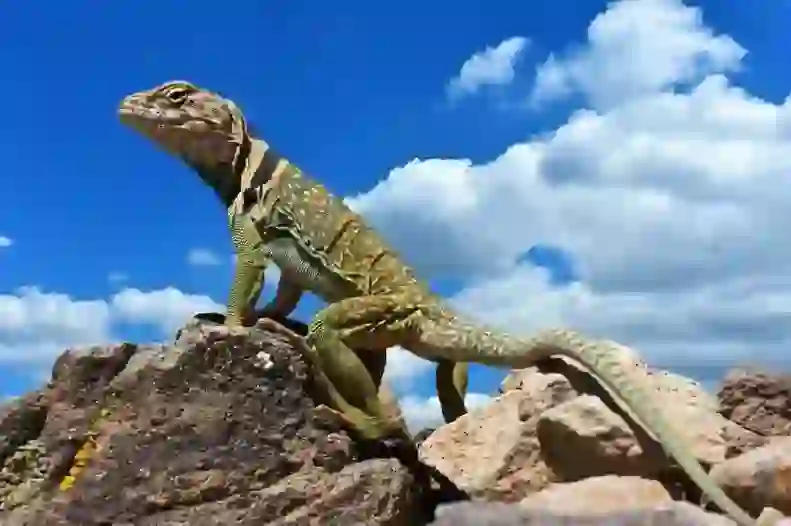
Where does the lizard get its name?
They are called “Lizard” in English, but in Japanese they are actually called “tokage”. Why are they called tokage in Japanese? This time, we will introduce the origin of the name. There are two theories about the origin of the name tokage. ・The theory that they came to be called tokage because they hide in the shadows of doors. ・The theory that tokake, which means to run fast, changed its sound. Both theories are based on the behavior of Lizards.
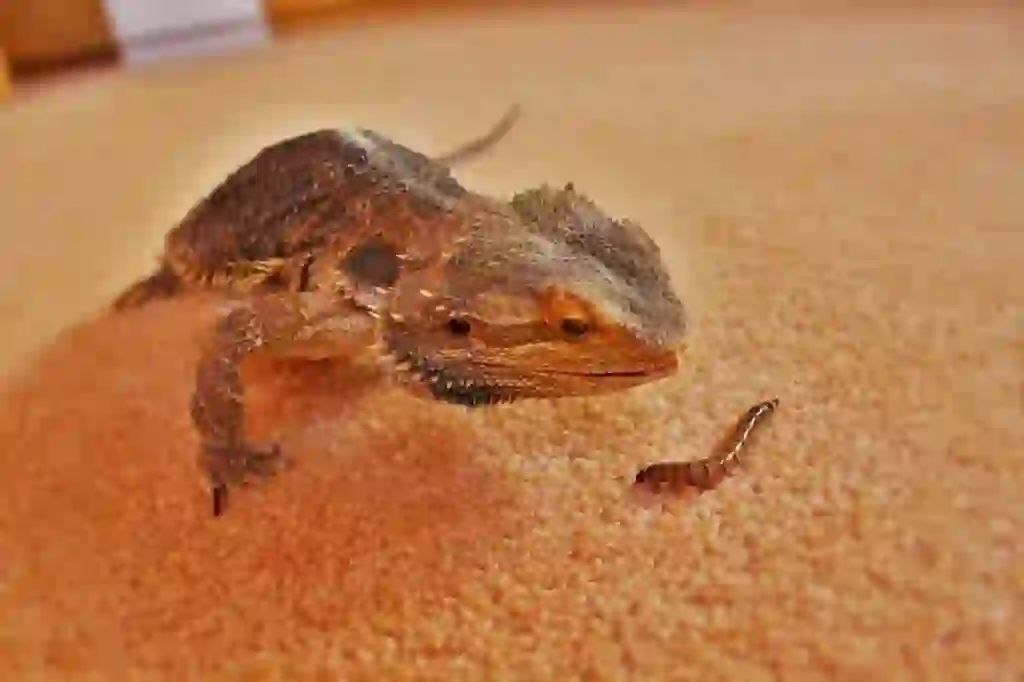
Why do lizards live there?
There are many types of Lizards and they live in a wide range of places, so we cannot tell you everything. But the environment that Lizards need is a place where they can sunbathe. This is because Lizards regulate their body temperature and condition by sunbathing. Their body temperature changes depending on the environment, so they manage it by themselves by sunbathing or entering the shade. Also, they can maintain their health by getting moderate ultraviolet rays. This is because they may get sick if they do not get enough ultraviolet rays. The reason why there are many Lizards living in warm regions may be because the environment for sunbathing is well prepared.
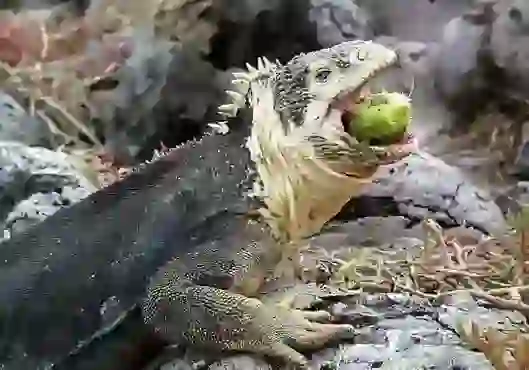
What do lizards eat?
The food varies depending on the type of Lizard. The most common food is “insects”. Lizards that are kept as pets often eat crickets and mealworms because there are not many types of insects sold. Wild Lizards eat more types of insects, such as spiders and grasshoppers.
“Omnivorous” Lizards can eat not only insects but also vegetables, fruits and artificial food. They have a lot of things that they can eat as food, so they don’t seem to have trouble with food. However, some Lizards are very picky about their food, just like humans, so they can’t eat anything just because they are omnivorous. Also, some large types of Lizards eat “meat”. Insects are not enough to fill their stomachs when they need food that matches their body size. There are many types of Lizards, and the genres of food are also wide. When you keep a Lizard as a pet, we recommend that you check what kind of food it eats beforehand.
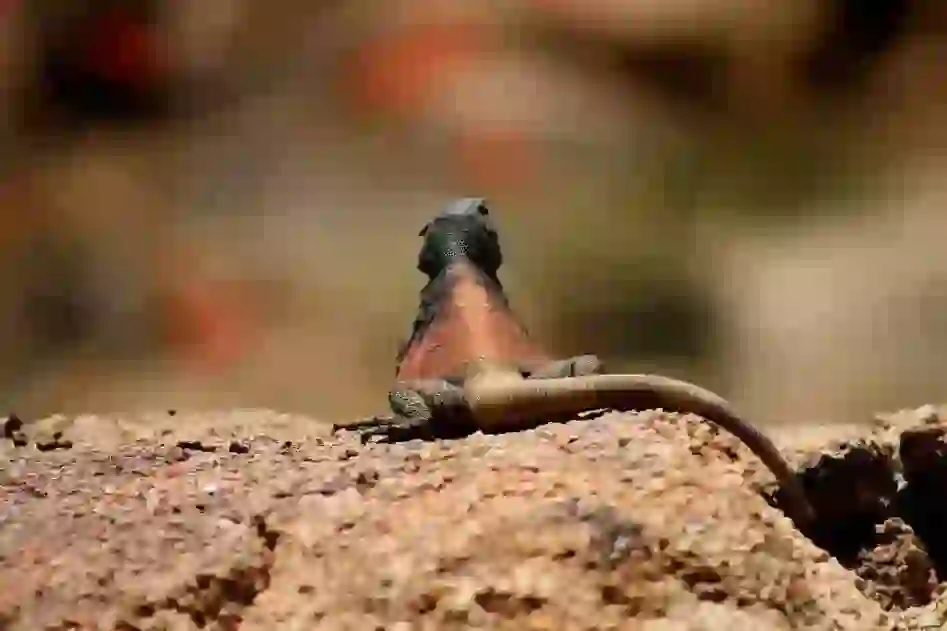
Why does a lizard's tail cut off?
Lizards can detach their tails by themselves when they are targeted by enemies. They do this to buy time to escape.
The lizard’s tail keeps moving for a while even after it is cut off. The enemy is distracted by the movement of the tail, so the lizard can run away in the meantime. How does the lizard’s tail work? Actually, there is a crack called a “breakaway joint” in the tail. By stimulating the spine, the breakaway joint can be separated. There is no bleeding because the muscles contract immediately at the cut. The cut-off tail regenerates over several months. However, there is a high possibility that it will be smaller or distorted than the previous tail. Also, it takes a lot of energy to regenerate, which puts a strain on the body.
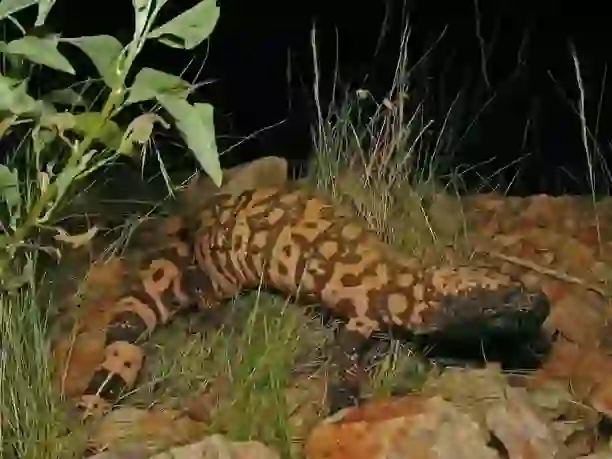
Are there dangerous species of lizards?
The dangerous types of lizards are those that have venom and those that have sharp teeth. They do not live in Japan, but they are sometimes imported from overseas as pets. Therefore, you should know that there are some dangerous types of lizards among them. I will introduce you to some of the dangerous types of lizards. ・Gila monster. If you are bitten, you will be paralyzed by the neurotoxin and suffer from severe pain and nausea.
・Beaded lizard. If you are bitten, the venom contains an action that destroys the red blood cells in the blood, so there is a possibility that the function of the internal organs will decline.
・Green iguana. You can keep them as pets, but males can become aggressive and attack people when they are in heat. Also, iguana teeth are sharp like a saw, so if you are bitten, you will get a wound that needs to be stitched.
・Crocodile Monitor. They have teeth like sharp fangs, so they can eat a little larger mammals such as deer. They have an aggressive personality, so there is a risk of being attacked. They are also imported to Japan as pets, but you cannot keep them without permission from the local government.
・Common water monitor. They have a strong force that can crush a turtle. They also have a habit of eating carrion, including human corpses, not just animal carcasses. If you are bitten, you may not only get poisoned, but also get infected.
・Komodo dragon. They are large lizards and famous as carnivores. They can catch and eat large mammals such as goats and wild boars. They not only eat animals, but also attack and eat humans. There have been incidents of this happening. They also have venom, so they are the most dangerous type to watch out for.

Is it true that some lizards blend in with nature?
When it comes to creatures that are good at “camouflage”, blending into the natural environment such as plants, “chameleons” are famous. However, chameleons are not the only ones that can camouflage. There are some types of lizards that are good at camouflage, so I will introduce some of them to you. ・Northern Leaf-Tailed Gecko. They are white or gray and can camouflage themselves with the bark of trees.
・Choahoua giant gecko. They have dark brown or green mixed in and can camouflage themselves with the moss on the bark. ・Satanic flat-tail gecko. They are brown and can camouflage themselves with the leaves of trees. Their tails are shaped like leaves that have been eaten by insects to resemble real leaves.
These lizards are so well blended into nature that you can’t find them unless you look closely. They have patterns of more than one color, not just one color, so they can blend in better with plants. Also, pay attention to their distinctive body shapes as well as their colors.
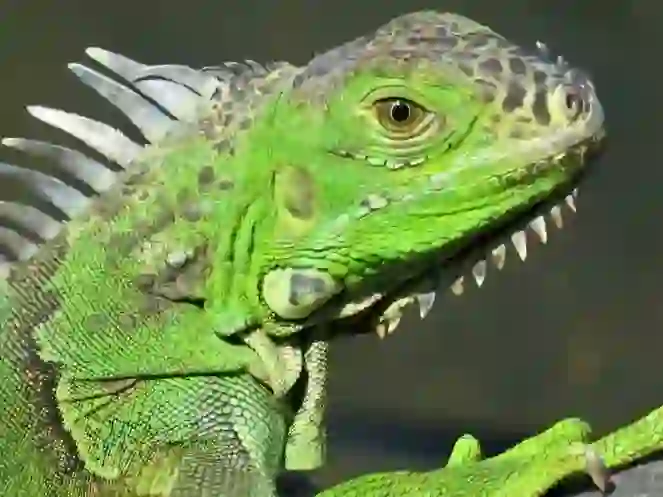
How long does a lizard live?
The lifespan of lizards is influenced not only by the type, but also by the living environment. Wild lizards live for about 5 to 6 years, but their lifespan can be shorter because they are more likely to be attacked by predators. Some captive lizards have lived for more than 10 years. They probably lived longer because they were not targeted by predators and their breeding environment suited them. Which type of lizard lives the longest among all lizards? It is the Komodo dragon, a large lizard. The Komodo dragon’s lifespan is said to be about 50 years. There are some lizards that live quite long.

What kind of animals are the natural enemies of lizards?
Wild lizards have many predators around them. ・Mammals such as cats, weasels, foxes, raccoons, and raccoon dogs. ・Birds such as crows, shrikes, and owls. ・Reptiles such as snakes and larger lizards that cannibalize them.
There are many creatures that they have to be wary of. Even among the same lizards, they can be attacked if they are not careful. Also, young lizards can be eaten by carnivorous insects or frogs.

Would you like to become a part of the 'Animalbook.jp'?
Turn your knowledge into Q&A and share it with the world. ※Publication will be activated after purchase. Let's share information together!
Lizard Type of List
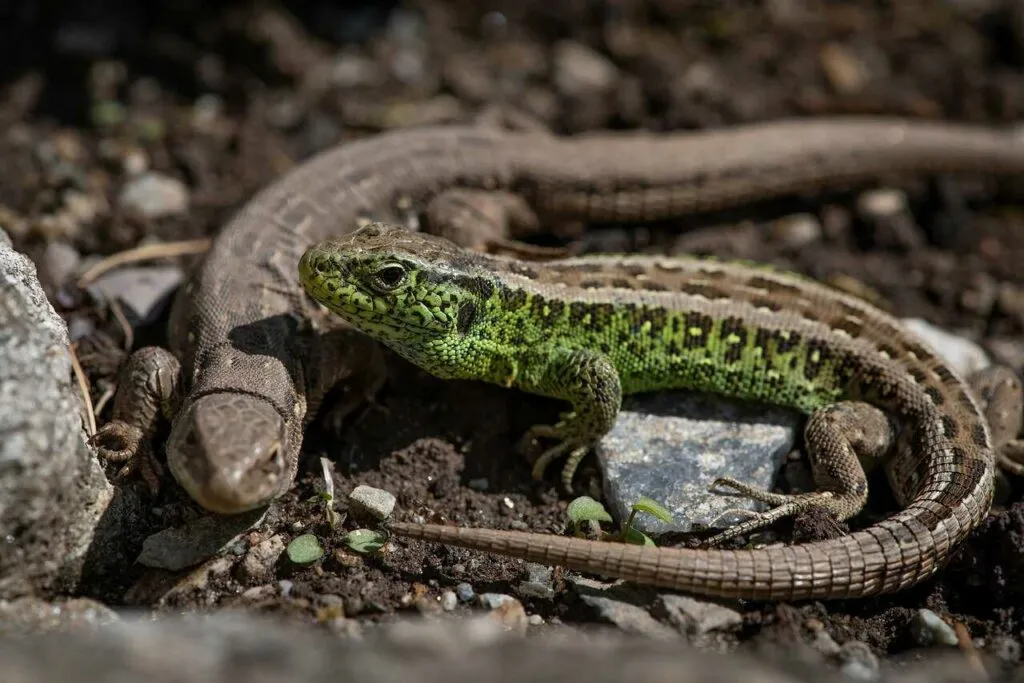
Varanidae. 【Varanus.】 ・Spiny-tailed monitor. ・White-throated monitor lizard. ・Black-throated Monitor. ・Auffenberg's Monitar. ・Black tree monitor. ・Short-tailed Monitor. ・Ceram Mangrove Monitor. ・Blue-tailed monitor. ・Dumeril's monitor. ・Savannah monitor. ・Finsch's Monitor. ・Kimberley rock monitor. ・Yellow-spotted Monitor. ・Mangrove monitor. ・Peach Throat Monitor. ・King's Goanna. ・Kordo Tree Monitor. ・Cobalt Tree monitor. ・Yellow head monitor. ・Mertens Monitor. ・Nile monitor. ・Ornate Nile Monitor. ・Torch Monitor. ・Gray's monitor. ・Pilbara Rock Monitor. ・Reisinger's Tree Monitor. ・Rosenberg's Monitor. ・Green tree monitor. ・Black Rough Neck Monitor. ・Two-striped Water Monitor. ・Cuming's Water Monitor. ・Black Water Monitor. ・Marbled Water Monitor. ・White Head Monitor. ・Water Monitor. ・Togian Water Monitor. ・Sulfer Water Monitor. ・Asian Water Monitor. ・Similis Monitor. ・Solomon Island Spiny Monitor. ・Storr's Monitor. ・Timor Monitor. ・Freckled Headed Monitor. ・Lace Monitor. ・Tricolored monitor. Lanthanotidae. ・Borneo Earless Monitor. Iguanidae. 【Basiliscus】 ・Plumed basilisk. 【Chalarodon.】 ・Madagascar iguana. 【Anolis.】 ・Cuban False Chameleon. ・Oriente Bearded Anole. 【Crotaphytus.】 ・Common collared lizard. ・Black-collared Lizard. 【Ctenosaura.】 ・Balsas Armed Lizard. ・Yucatan Spiny-tailed Iguana. ・San Esteban Island Iguana. ・Rio Aguan Valley Iguana. ・Mexican spiny-tailed iguana. ・Five-keeled Spiny-tailed Iguana. ・Black iguana. ・Guatemalan Spiny-tailed Iguana. 【Gambelia.】 ・Long-nosed Leopard Lizard. 【Iguana.】 ・Lesser Antillean iguana. ・Green iguana. ・Iguana iguana ssp. 【Oplurus.】 ・Cuvier's Madagascar Swift. ・Merrem's Madagascar Swift. 【Egernia.】 ・Baja Blue Rock Lizard. 【Polychrotidae.】 ・Many-colored Bush Anole. 【Sauromalus.】 ・Common chuckwalla. ・Spiny chuckwalla. Phrynosomatidae. 【Callisaurus.】 ・Zebra-tailed Lizard. 【Phrynosoma.】 ・Texas Horned Lizard. ・Mexican Plateau Horned Lizard. ・Northern Desert Horned Lizard. ・Regal Horned Lizard. 【Sceloporus.】 ・Blue Spiny Lizard. ・Emerald swift. 【Cordylus.】 ・Maasai Girdled Lizard. ・Graceful Crag Lizard. ・Eastern Cape Crag Lizard. ・Limpopo Girdled Lizard. ・Tropical girdled lizard. ・Barberton Girdled Lizard. ・Zoutpansberg Girdled Lizard. ・Regal Girdled Lizard. 【Platysaurus.】 ・Emperor Flat Lizard. Teiioidae. 【Aspidoscelis.】 ・Rainbow Whiptail. ・Six-lined Racerunner. 【Tupinambis.】 ・Black and white tegu. ・Red Tegu. ・Golden Tegu. 【Dracaena.】 ・Guyana Caiman Lizard. Lacertidae. 【Eremias.】 ・Eremias przewalskii tuvensis. 【Gallotia.】 ・Western Canaries Lizard. ・Giant gallotia. 【Gastropholis.】 ・Green Keel-bellied Lizard. 【Lacerta agilis.】 ・Sand Lizard. ・Balkan Green Lizard. 【Podarcis.】 ・Bocage's Wall Lizard. ・Iberian Wall Lizard. ・Common Wall Lizard. ・Italian wall lizard. 【Takydromus.】 ・Oriental Long-tailed Grass Lizard. ・Japanese grass lizard 【Timon.】 ・Ocellated lizard. ・Timon lepidus nevadensis. Agamidae. 【Acanthosaura.】 ・Mountain Horned Dragon. ・Natalia's Agama. 【Agama.】 ・Red-headed Rock Agama. 【Calotes.】 ・Maned Forest Lizard. ・Vietnamese Blue Crested Lizard. ・Blue Crested Lizard. 【Chlamydosaurus.】 ・Frilled lizard. 【Draco.】 ・Common flying dragon. 【Gonocephalus.】 ・Chameleon Forest Dragon. ・Doria's Anglehead Lizard. 【Hydrosaurus.】 ・Malayan sailfin lizard. ・Green sail finned lizard. ・Philippine sailfin lizard. 【Lophosaurus.】 ・Twin-crested Anglehead Dragon. ・Long's Forest Dragon. ・Solomons Tree Dragon. ・Black-lipped Forest Dragon. 【Diploderma.】 ・Green Striped Tree Dragon. 【Leiolepis.】 ・Giant butterfly lizard. ・Leiolepis ngovantrii. ・Reeves' Butterfly Lizard. 【Intellagama.】 ・Chinese water dragon. ・Australian water dragon. 【Xenagama.】 ・Dwarf Shield Tailed Agama. 【Phrynocephalus.】 ・Secret Toadhead Agama. ・Phrynocephalus sp. 【Pogona.】 ・Rankin's dragon. ・entral Bearded Dragon. 【Uromastyx.】 ・North-African Mastigure. ・Moroccan Spiny-tailed Lizard. ・Egyptian Spiny-tailed Lizard. ・Egyptian spiny-tailed lizard. ・Sudan Mastigure. ・Uromastyx dispar flavifasciata. ・Mali Spiny-tailed Lizard. ・Saharan Spiny-tailed Lizard. ・Indian Spiny-tailed Lizard. ・Eyed Spiny-tailed Lizard. ・Ornate Dabb Lizard. ・Uromastyx ornata philbyi. ・Princely Spiny-tailed lizard. ・Thomas's Mastigure. Scincidae. 【Amphiglossus.】 ・Diving Skink. ・Reticulate Skink. 【Chalcides.】 ・Ocellated skink. 【Corucia.】 ・Prehensile-Tailed Skink. 【Egernia.】 ・Cunningham's skink. ・Pygmy Spiny-tailed Skink. ・Hosmer's Spiny-tailed Skink. ・Gidgee Skink. 【Emoia.】 ・Black Emo Skink. 【Eugongylus.】 ・Sula Skink. 【Eumeces.】 ・Algerian skink. ・Schneider's skink. 【Hemisphaeriodon.】 ・Pink-tongued skink. 【Isopachys.】 ・Gyldenstolpe's Worm Skink. 【Lamprolepis.】 ・Emerald Tree Skink. 【Melanoseps.】 ・Loveridge's limbless skink. 【Mochlus.】 ・True Fire Skink. 【Plestiodon.】 ・Japanese skink. 【Pygomeles.】 ・Braconnier's short skink. 【Scincopus.】 ・Sandfish Skinks. 【Scincus.】 ・Hemprich's Skink. ・Sand Fish Skink. ・Eastern Skink. 【Tiliqua.】 ・Merauke Blue-tongued Skink. ・Indonesian blue-tongued skink. ・Key Island Blue-tongued Skink. ・Central bluetongue skink. ・Blotched bluetongued skink. ・Single Back Skink. ・Rottnest Island Shingleback Lizard. ・Shark Bay Shingleback Skink. ・Common Shingleback Skink. ・Tanimbar Island Blue Tongued Skink. ・Northern Blue-tongued Skink. ・Eastern Blue-tongued Skink. 【Trachylepis.】 ・Kenyan Zebra Skink. ・Five-lined Mabuya. 【Tribolonotus.】 ・Red-Eyed Bush Crocodile Skink. ・White-eyed Crocodile Skink. ・Sulawesi Spiny Water Skink. ・Chinese Waterside Skink. Gerrhosauridae. 【Broadleysaurus.】 ・Sudan plated lizard. 【Gerrhosaurus.】 ・Western tawny plated lizard. ・Oriental tawny plated lizard. 【Tracheloptychus】 ・Peters' keeled plated lizard. 【Zonosaurus.】 ・Karsten's girdled lizard. ・Broad-tailed Girdled Lizard. ・Madagascar Girdled Lizard. ・Great Plated Lizard. ・Madagascar girdled lizard. ・Fore-lined Girdled Lizard. Xenosauridae. 【Xenosaurus.】 ・Chinese crocodile lizard. 【Xenosauridae.】 ・Flathead Knob-scaled Lizard. Xantusiidae. 【Xantusia.】 ・Smith's Tropical Night Lizard. Amphisbaenidae. 【Amphisbaena.】 ・peckled Worm Lizard. 【Blanus.】 ・Iberian Worm Lizard. Bipedidae. 【Bipedidae.】 ・Four-toed Worm Lizard. Trogonophiidae. 【Trogonophis.】 ・Checkerboard Worm Lizard. Anguidae. 【Elgaria.】 ・Southern alligator lizard. 【Pseudopus.】 ・Pallas's glass lizard. ・Pseudopus apodus thracius. ・Hart's Glass Lizard. Eublepharidae. 【Aeluroscalabotes.】 ・Cat gecko. ・Borneo Cat Gecko. 【Coleonyx.】 ・Central American Banded Gecko. 【Eublepharis.】 ・Iranian fat-tailed gecko. ・Common leopard gecko. 【Goniurosaurus.】 ・Vietnamese Leopard Gecko. ・Hainan Far East Gecko. ・Chinese Leopard Gecko. 【Hemitheconyx.】 ・Fat-tailed gecko. 【Holodactylus.】 ・African Whole-toed Gecko. Gekkonidae. 【Chondrodactylus.】 ・Whorled sand gecko. ・Namibien Sand Gecko. 【Correlophus.】 ・New Caledonian Crested Gecko. 【Cyrtopodion】 ・Bow-fingered geckos. 【Geckolepis.】 ・Peters's Spotted Gecko. 【Gehyra.】 ・Halmahera Gecko. 【Gekko.】 ・Tokay Gecko. ・Marbled Gecko. ・Schlegel's Japanese gecko. ・Golden Gecko. 【Hemidactylus.】 ・Yellow-belly gecko. ・Termite Hill Gecko. 【Homopholis fasciata.】 ・Strped Velvet Gecko. 【Lygodactylus.】 ・Dwarf Yellow-headed Gecko. ・Turquoise dwarf gecko. 【Pachydactylus.】 ・Pachydactylus bibronii. 【Paroedura.】 ・Mocquard's Madagascar Ground Gecko. ・Madagascar Big Eyed Gecko. ・Ocelot gecko. ・Stumpff's Madagascar Ground Gecko. 【Phelsuma.】 ・Broad-tailed day gecko. ・Striped day gecko. ・Boehme's Giant Day Gecko. ・Madagascar Giant Day Gecko. ・Peacock Day Gecko. ・Standing's day gecko. 【Ptychozoon.】 ・Kuhl's flying gecko. 【Stenodactylus.】 ・Anderson's Short-fingered Gecko. ・Elegant Gecko. 【Tarentola.】 ・Helmethead Gecko. 【Teratolepis.】 ・Carrot-tail viper gecko. 【Uroplatus.】 ・Satanic leaf-tail gecko. ・Mossy leaf-tail gecko. Carphodactylidae. 【Nephrurus.】 ・Central rough knob-tailed gecko. ・Pernatty Knob-tailed Gecko. ・Common Smooth Knob-tailed Gecko. ・Pilbara smooth knob-tailed gecko. ・Banded knob-tailed gecko. 【Phyllurus】 ・Ringed Thin-tailed Gecko. 【Underwoodisaurus.】 ・Australian Thick-tailed Gecko. Phyllodactylidae. 【Ptyodactylus.】 ・Sinai Fan-fingered Gecko. 【Thecadactylus.】 ・Thecadactylus oskrobapreinorum. Sphaerodactylidae. 【Gonatodes.】 ・Yellow-headed Gecko. 【Pristurus.】 ・Carter's Rock Gecko. 【Teratoscincus.】 ・Roborowski's Wonder Gecko. Diplodactylidae. 【Bavayia.】 ・New Caledonian gecko. 【Diplodacctylus.】 ・Northern Spiny-tailed Gecko. ・Eastern Stone Gecko. 【Eurydactylodes.】 ・Bauer's Chameleon Gecko. 【Naultinus.】 ・Northland Green Gecko. 【Mniarogekko.】 ・Choahoua giant gecko. 【Oedura.】 ・Northern Velvet Gecko. ・Ocellated Velvet Gecko. 【Rhacodactylus.】 ・Gargoyle gecko. ・New Caledonian giant gecko. ・Greater rough-snouted giant gecko. 【Strophurus.】 ・Strophurus spinigerus spinigerus. Pygopodidae. 【Lialis.】 ・Jicar's Snake-lizard. Chamaeleonidae. 【Calumma.】 ・Short-horned chameleon. ・Green-eared Chameleon. ・Crested Parson's Chameleon. ・Parson's chamaeleon. 【Chamaeleo.】 ・Side-striped Chameleon. ・Veiled chameleon. ・Usambara Three-horned Chameleon. ・Flap-necked_chameleon. ・Helmeted Chameleon. ・Jackson's chameleon. ・Trioceros jacksonii merumontanus. ・Yellow-crested Jackson's Chameleon. ・Meller's Chameleon. ・Mountain Chameleon. ・Coarse Chameleon. ・Werner's Chameleon. 【Furcifer.】 ・Carpet Chameleon. ・Malagasy giant chameleon. ・Panther chameleon. ・Spiny chameleon. ・Wills' Chameleon. 【Bradypodion.】 ・Bradypodion transvaalense. 【Kinyongia.】 ・Fischer's chameleon. 【Rieppeleon.】 ・Bearded Pygmy Chameleon. ・Kenya Pygmy Chameleon. 【Brookesia.】 ・Spiny Leaf Chameleon.
Information
Congratulations! You are the first commenter!

Create Your Favorite List!
Lizard
Save the animals you love! Build your own list to quickly revisit your favorites later.

Would you like to leave a comment?
※Please note: This is for the purchase of rights to post comments within the article.
Find Your Favorites!
Our shop offers a unique and attractive selection of goods themed around various animals.
Lizard References

- ウィキペディア「トカゲ」
- sunshine aquarium「地球で最も栄える爬虫類・トカゲの多様な生態と水辺の暮らしに注目!」
- トカゲの知られざる生態「ニホントカゲの冬眠時期や場所はどこで行うの?」
- トカゲの飼育と種類ナビ!餌・初心者でも飼いやすい種類「トカゲの寒さへの耐性や主な生息地について」
- Private Zoo Garden「二ホントカゲさんのプロフィール」
- Pet Pedia「身近な爬虫類!ニホントカゲの生態や飼い方」
- ailovei「知っておきたい。世界の危険なトカゲとカメ8種」
- 爬虫類ショップSAURIA「トカゲ図鑑」
- 爬虫類ショップSAURIA「ヤモリ図鑑」
- 爬虫類ショップSAURIA「カメレオン図鑑」
Lizard Introduction of media used
出典:https://pixabay.com/videos/id-3779/

出典:https://pixabay.com/images/id-4177874/

出典:https://commons.wikimedia.org/wiki/File:Nihontokage6427.JPG

出典:https://pixabay.com/images/id-1410631/

出典:https://pixabay.com/images/id-2789805/

出典:https://pixabay.com/images/id-4144054/

出典:https://pixabay.com/images/id-2391541/

出典:https://pixabay.com/images/id-1820408/

出典:https://pixabay.com/images/id-86618/

出典:https://commons.wikimedia.org/wiki/File:Mexican-Beaded-Lizard.jpg

出典:https://pixabay.com/images/id-4457651/
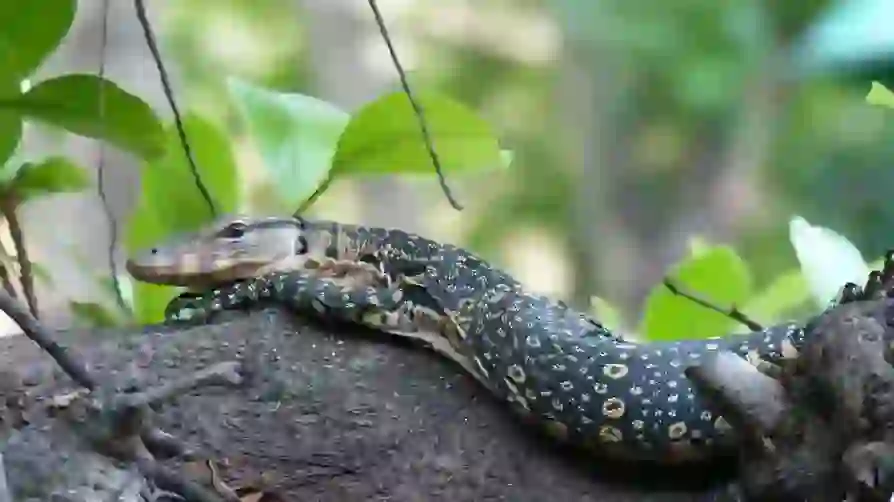
出典:https://pixabay.com/images/id-1347215/
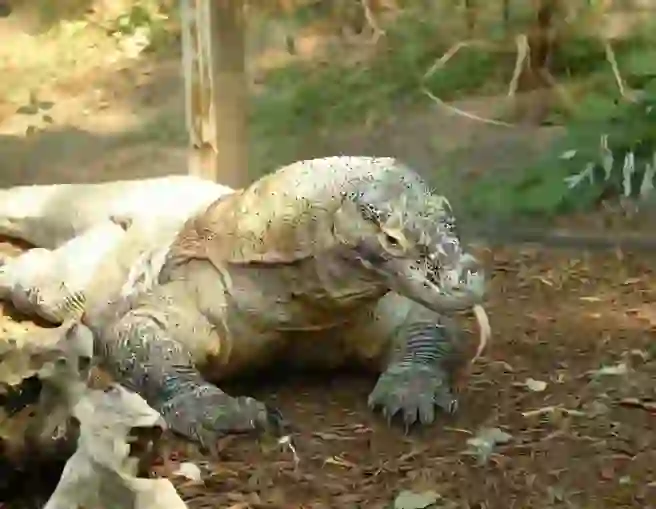
出典:https://pixabay.com/images/id-1291969/
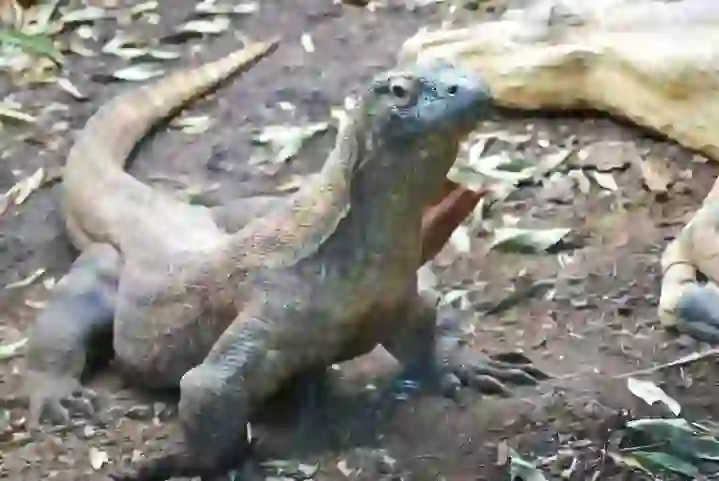
出典:https://pixabay.com/images/id-1984970/
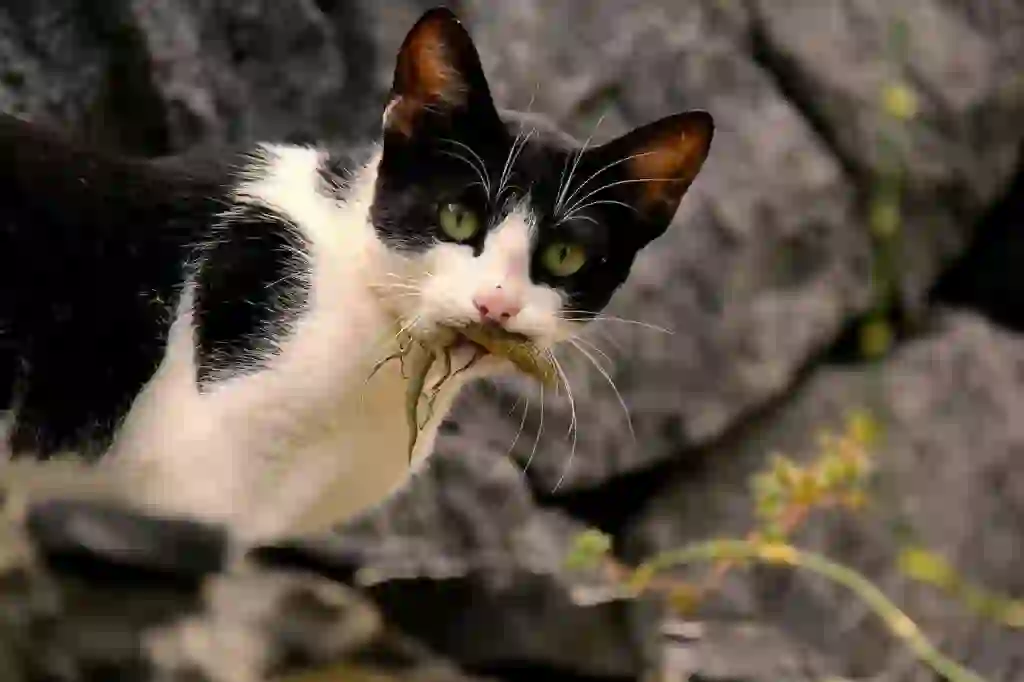
enemy
出典:https://pixabay.com/images/id-3131876/

enemy
出典:https://pixabay.com/images/id-4894931/

Help Enrich Our Animalbook.jp with Your Media!
We are constantly looking to expand and enrich our Animalbook.jp with amazing photos and videos of animals. If you have any media that you'd like to share, please contribute and help us showcase the beauty and diversity of the animal kingdom. Your submissions will be credited and featured in our encyclopedia, reaching a wide audience of animal lovers.
















